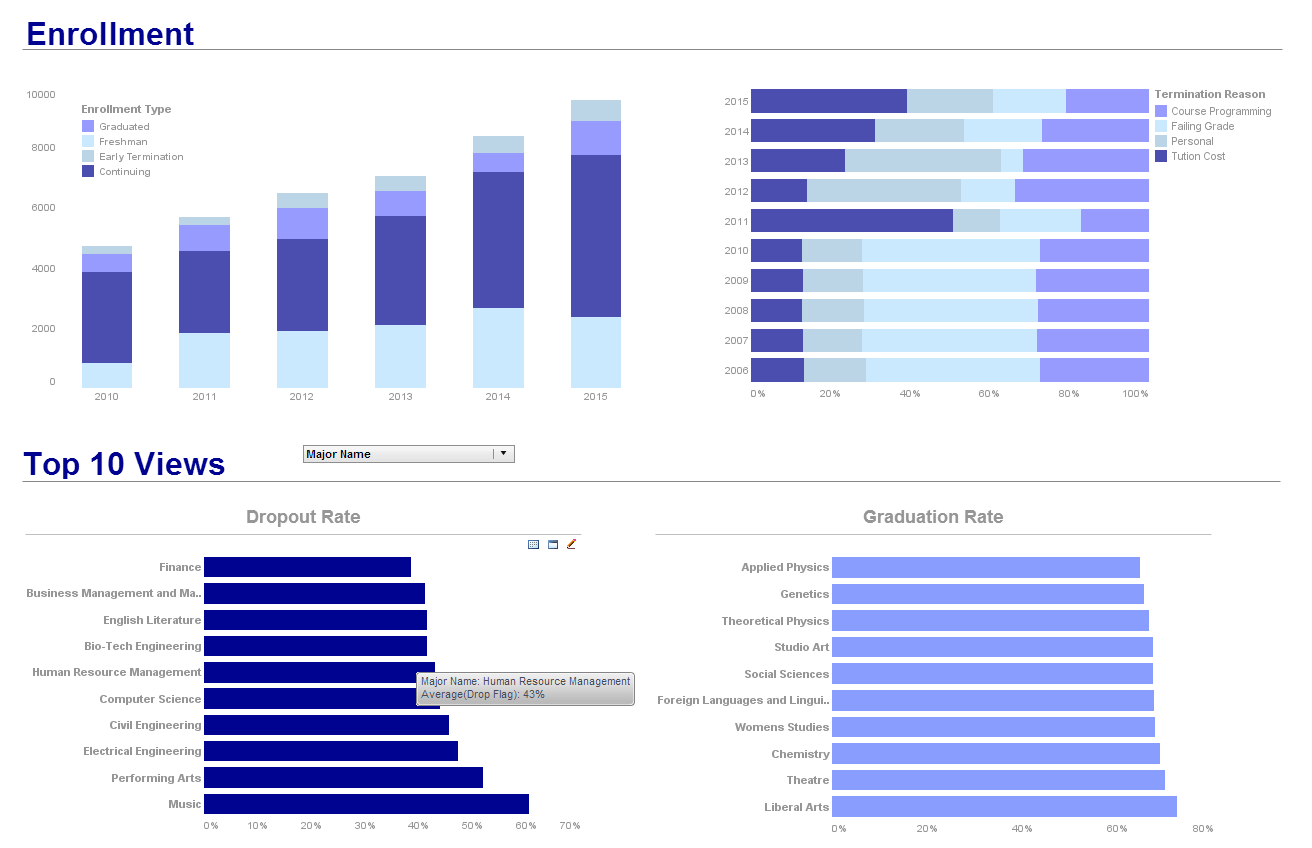InetSoft Webinar: Evaluating and Purchasing Business Intelligence Software
This is the transcript of a Webinar hosted by InetSoft on the topic of "Evaluating and Purchasing Business Intelligence Software." The speaker is Mark Flaherty, CMO at InetSoft.
Today we’re talking about the ever more complex process of evaluating, purchasing, and implementing business intelligence software. Today’s BI platforms are a far cry from the basic query and reporting tools of years ago. These platforms are complex to implement. They’re not cheap.
So organizations need to plan and carefully strategize. Adding to the challenge, the business intelligence market has seen acquisitions in the past, but is still quite cluttered. This leads to a host of questions for organizations purchasing business intelligence software.
How is an organization to develop a BI strategy, buy the right platform and avoid being negatively impacted by a rapidly evolving and consolidating market? So today our topic is around the BI software market and some of the trends and challenges that listeners might encounter when they’re picking out business intelligence technology.
So I’d like to start with what are some of the 3 or 5 trends in the business intelligence market, especially when it comes to technology? It’s a great question, and before answering it, I would like to start by defining what business intelligence is because there’s a lot of misconceptions in the world as to what it is.
| #1 Ranking: Read how InetSoft was rated #1 for user adoption in G2's user survey-based index | Read More |
Broader Business Intelligence
Some people view business intelligence as analytics and reporting tools, but I think that business intelligence is an even broader market. It’s everything that happens to data on the way to transforming it to meaningful and useful information. So we include technologies like data integration, data modeling, analytics, presentation, data visualization, data modeling etc.
Enterprises are no longer interested in just analyzing past trends but rather they are much interested in looking towards the future and doing predictive modeling. The driver for this is enterprise efficiency and questions such as how many prospects can I convert to customers? How many of my existing customers can I up sell and cross sell? So that’s being effective. And how efficient can I be? How much service and how much useful work can I squeeze out of my recourses?
All of this involves the convergence of many disciplines and hence the trends that we’re talking about. Most of the data in the enterprises is locked in unstructured formats. Therefore we do see a convergence of structured and unstructured business intelligence. It’s kind of convergence of the world of business intelligence and knowledge management.
Data does not exist in vacuum. Data is always used as part of various business processes. Processes themselves have business intelligence on top of them in terms of progress dashboards and performance monitoring tools. We no longer view those two areas as separate tools like business process management tools, BPM.
 |
View a 2-minute demonstration of InetSoft's easy, agile, and robust BI software. |
Overlapping BI Tools
Tools are beginning to overlap and integrate with business intelligence tools, so that enterprises can take a singular view into both process and data business intelligence. And another trend that I think is worth mentioning is business intelligence has traditionally been thought of as a being a long latency type discipline. You always need to load the data into the warehouse the day before or for several hours before you could analyze the data. Well, the world moves much faster now, and I think everyone is interested much more in real time business intelligence, so we see many vendors coming up with business tools that allow for monitoring real time business activities. You keep hearing that new acronym even with traditional business intelligence.
Now back to the question of which BI vendors to evaluate. I think the answer to that is unfortunately not very straight forward. The easy answer is one should go with the established vendors. The ‘big’ BI vendors have enough footprint that you know that they are not going to disappear, and they are not going to create a vacuum for their customers.
However, the unfortunate truth is that many of these vendors move much slower in the market than some of the emerging players. The analogy I use is that it takes about 18 miles for an aircraft carrier to turn and therefore for Oracle or IBM or SAP or for Microsoft to invent something truly new and innovative is much more difficult that for a smaller more agile, more flexible company.
Read what InetSoft customers and partners have said about their selection of Style Report as their production reporting tool. |
So we do see most of the innovative solutions coming from the smaller players, and that’s the really tough decision. If I’m looking for some innovative new solutions, that’s where I recommend a smaller business intelligence vendor.
| Next: What to Look for in a BI Platform |



